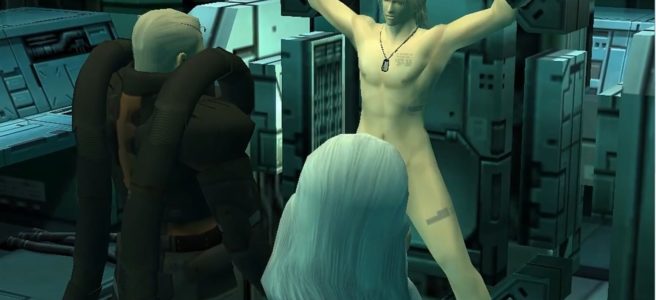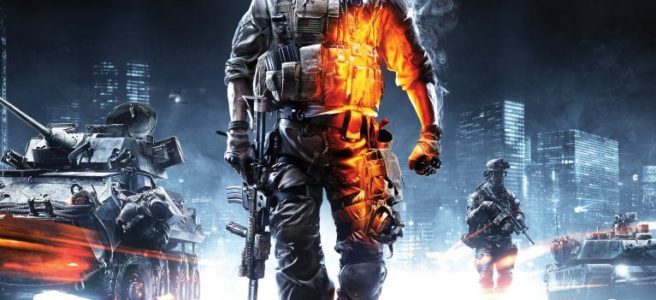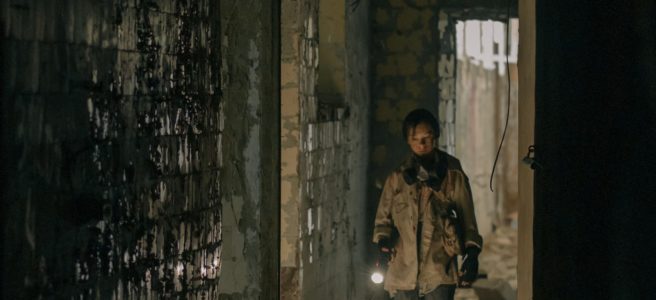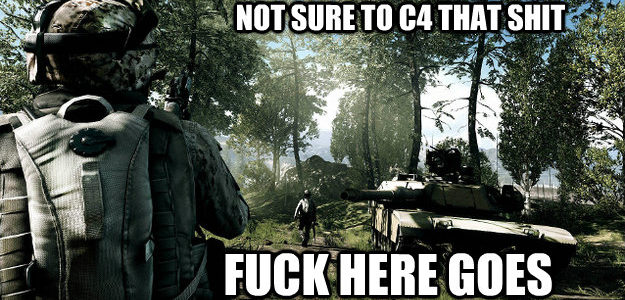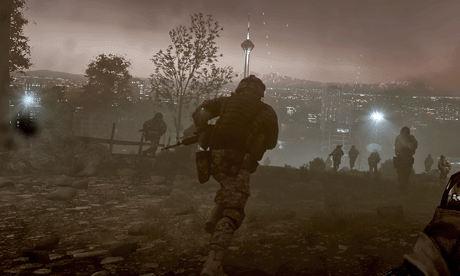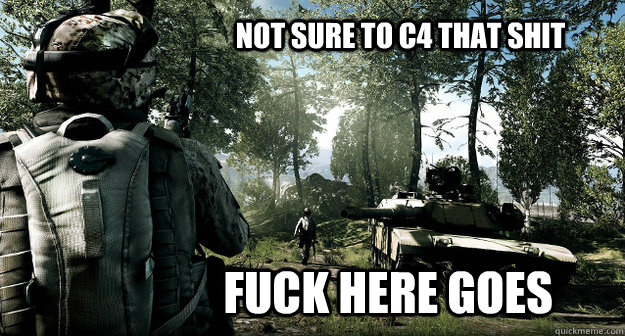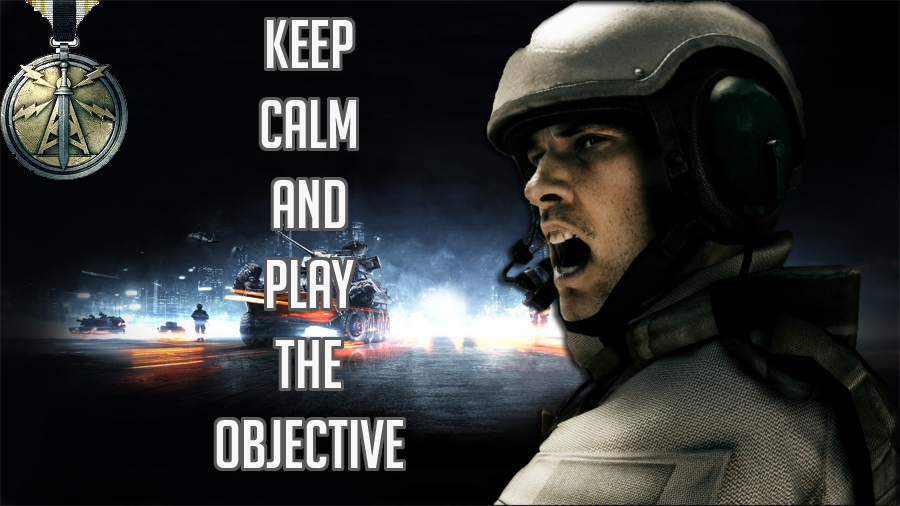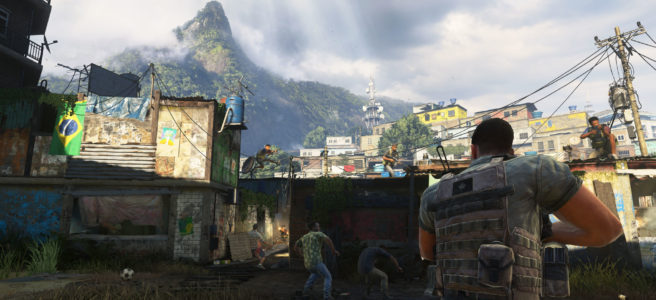Welcome back to part five of the Resident Evil retrospective! In this entry we’re going to cover the fifth (and thus far final) movie in the franchise, Resident Evil: Retribution! However, just before we get to that, I want to highlight a somewhat relevant article I read recently about how fanboys are ruining Hollywood. Considering that I’ve been criticizing Paul W.S. Anderson for deviating from the games, this might make me seem like a biased fanboy… but the truth is that I don’t really give a crap about the Resident Evil games. I’ve played a little bit of most of them, but they’re not really my cup of tea – gimme a Metal Gear, Battlefield or Splinter Cell game any day of the week. That said, I don’t think the authour of the article defenders their position very well – they call on fanboys to piss off because they can’t write off a movie for making deviations from the source material. In some ways I can actually agree with this, but the way they presented it is questionable. He seems to be writing this as a response to Man of Steel and World War Z, stating that (SPOILER) why should it matter if Superman kills Zod? In this respect, it is a betrayal of what the character stands for and also creates major scriptwriting issues in the future (if Superman is willing to kill, then why won’t he kill his enemies when the going gets tough from here on out?). The changes in Man of Steel change fundamental aspects of the character themselves, not the way that they’re presented. On a related note, World War Z has nothing to do with the novel beyond having some type of zombie in it – if you’re going to change the source material that much then you might as well just give it an original name. The only reason I can see them not doing so is because it will allow them to market to an existing audience. However, I did agree with some elements of the article, such as when the authour defends Peter Jackson’s The Hobbit. I may not care for Resident Evil, but I’m definitely a Tolkien fanboy… and I actually quite liked The Hobbit in spite of its excessive length. It is extremely faithful to Tolkien’s book and appendices (with the only major exception being the stuff surrounding Azog), moreso than The Lord of the Rings was. On its own merits, The Hobbit was quite a good movie, and people who write it off due to it not sticking to the book solely or for being too long (I honestly found that it didn’t feel like 2 1/2 hours) are really missing out. All-in-all, the authour makes some decent points, but I can’t find myself in agreement with them for the most part.
Anyway, after Afterlife, the Resident Evil series was even more popular (and reviled) than ever. Inevitably, Retribution was greenlit and prepared to assault the intelligence of audiences worldwide for a fifth time. Thankfully, the series had somewhat gained its footing, as Extinction and Afterlife were both at least watchable… could Retribution carry on this streak and turn the franchise into a true guilty-pleasure? Read on to find out…
There were quite a few posters for this movie, but this one’s my favourite. The skewed perspective and use of colour make it look very cool.
Afterlife raked in almost $300 million worldwide, making it by far the most successful entry in the franchise. While the series was basically a joke by now, it was still drawing in new audiences (especially internationally). This time around, Anderson seemed to want to draw back fans of the games, and so offered to introduce characters which had not been brought into the series yet. Based on a popularity poll, Leon Kennedy, Ada Wong and Barry Burton were written into Retribution. The marketing for the film also promised that the action was going to take place on a “global scale”, whereas previous entries were confined to the United States (barring the opening sequence in Afterlife). Also, since it performed so successfully in the previous film, Retribution was again shot and released in 3D… only this time they (thankfully) toned down the gimmicky usage of the medium. Crap almost never gets thrown at us to artificially hammer home the effect, instead it is integrated organically throughout.

Retribution features one of the largest main casts in the series. As usual, Alice is back in the lead. This time around she’s supposedly a regular human again, but you’d never know it – she displays impossible feats of athleticism and (sigh) dual wields so much that super-powered Alice would have said “Whoa, slow down girl!” Of course, at the end Alice does get all her super-powers back in the most convenient manner possible… bloody hell Anderson, make up your damn mind about how you want the character to “develop”! Actually, he and Milla did try to develop Alice in this entry somewhat by stealing a page from James Cameron. Alice finds a little girl who she becomes surrogate mother for, and then has to rescue her from the monsters near the end of the movie. It’s not even close to a stretch to suggest that this whole plot strand completely ripped off Aliens – hell, the rescue scene even uses identical framing and lighting to that film (not to mention that the kid is inexplicably cocooned as well). This whole subplot was ill-conceived in my opinion. Ripley is certainly one of the great heroines in all of cinema, and Aliens really drove that home… but ripping that off doesn’t suddenly make Alice a deep character. There’s no real established precedent at this point for Alice to be a surrogate mother to anybody, nor is it set up well at all. By throwing it in it just seems like Anderson and Jovovich just wanted to indulge their own family. To make matters worse, the relationship just makes no sense. The little girl, Becky, only follows Alice around because she thinks she’s her mother, but when she finds out that she isn’t she screams “You’re not my mommy are you?!?!” To that Alice simply quips “I am now!” As much as you’d like to be her mommy Alice, you really aren’t. Becky’s got a whole life that she can’t just forget because you decided that you should take care of her. Of course, the movie doesn’t address this because Alice has become a Mary Sue at this point, full-stop. She’s supposed to be vulnerable now, but she’s totally invincible in practice, and we’re never convinced that she’s in any sort of danger whatsoever.

If you’re a Ukrainian supermodel, you can kidnap anybody.
Enough about Alice though, onto the other characters. Retribution actually got a fair bit of buzz by bringing back characters who had been killed off, namely Rain (Michelle Rodriguez), Carlos Olivera (Oded Fehr) and James “One” Shade (Colin Salmon). To that I say one thing: AWESOME. Carlos and James were easily the best parts of their respective movies, and a chance to bring them back to kick more ass is very welcome indeed… unfortunately they are given little more than overglorified cameos. Like, literally all that they do is show up every once in a while and look intimidating before they get killed off unceremoniously (and another clone of Carlos gets munched by a zombie at the start of the movie). Well how about Rain then? Since Resident Evil she had become one of the most recognizable action heroines in modern cinema, surely she got a good role this time around? Umm well no. There’s two versions of Rain in the movie, a good one and a bad one. The good one runs around and is kind of funny for being fairly useless (and dies of course). Bad Rain on the other hand is such a poor tertiary villain that it’s cringe-worthy. I thought Rodriguez’s acting was bad in the first movie, but she’s just awful in Retribution. This actually really saddens me because she’s proven that she can be badass in movies such as Avatar, so wasting her like this is just frustrating. So there you have it, 3 favourites from the film franchise are brought back to much fanfare… and then squandered so badly that you’d swear that the filmmakers were intentionally screwing with us.
How about the other characters then? Boris Kodjoe returns as Luther West, and while he was pretty cool in both movies, he doesn’t really get to do much before his own unceremonious death. Albert Wesker also inexplicably makes a return after getting blown to smithereens at the end of the last movie… like, literally no one questions how he could have possibly survived the explosion. They don’t even offer a half-assed hand wave. On top of that, Shawn Roberts’ acting is pretty bad this time around. For whatever reason, he emphasizes every damn word that Wesker says, making him seem a bit odd to say the least. Jill Valentine (Sienna Guillory) also returns in a full-fledged role once again, but her acting is still very bad. She certainly livens things up “physically”, but doesn’t do a great job convincing us whenever she has to open her mouth. Also, I’m kind of annoyed that they decided to emulate Resident Evil 5 for her appearance. Like in Apocalypse, her outfit is distractingly impractical:
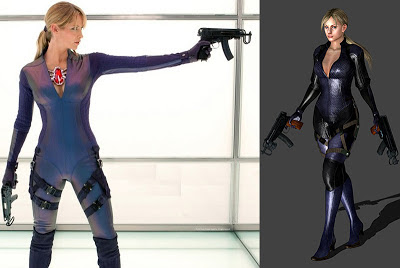
Sure, it provides eye candy, but I can’t really take that outfit seriously. As a defense to Paul W.S. Anderson though, the game series is mostly to blame for that outfit, but that said he also bears the responsibility for adapting it. I actually am kind of disappointed that Capcom reinforced the “single male loser in the basement” stereotype when they worked Jill into Resident Evil 5, especially since she’s not generally a particularly sexualized character in the series. Sexism is a big issue in the gaming industry, and forcing one of the major strong, female characters to prance around with massive cleavage damages our ability to see them beyond that (on the flip side of the coin, Chris Redfield’s muscles are RIDICULOUS as well – you see angry Internet commenters, sexism works both ways!).
Bloody hell I’ve almost written a thousand words on the characters and still haven’t gotten through them all. Okay, picking up the pace slightly, the first new addition is Li Bingbing as Ada Wong. As she puts it, she’s Wesker’s top agent… and that’s basically all we learn about her. She’s given absolutely no development, and Li’s acting is atrocious on top of that. Similarly, Johann Urb’s Leon Kennedy isn’t given any development either… but that doesn’t really matter because he comes across as a massive, stupid douche. As I’ve said before, I haven’t really played much of the games, but is Leon always this much of a dork? I know he’s a fan favourite, but between this and Resident Evil: Damnation, my opinion of him is that he has the personality of a piece of plywood. The only bright spot among the characters is Kevin Durand as Barry Burton. Again, he isn’t given much to work with, but he goes out with style. Sadly, Chris and Claire Redfield are both conspicuously absent this time around… although considering how many damn characters are in this movie, that’s probably for the best.

As for the plot… well, you might want to sit down before you read about it. I did not think it was possible for the Resident Evil movie franchise to make a stupider, more plotless movie than Afterlife, but Retribution makes that movie look like a freaking masters thesis. The plot holes and contrivances are so bad that they retroactively make the plots of the previous movies worse. Yes, you read that right. Here’s a list of the problems I jotted down while watching the movie: How does it make any sense for Umbrella to produce clones and put them in a perfectly simulated world to simulate zombie apocalypses? The movie claims that they do it to try to gain control of the T-virus, but I don’t buy this (since they don’t offer any “solutions”, they just unleash the zombies and call it a day). Why does Umbrella bother to go to the detail of creating a whole world when they do this simulation? For example, Alice finds photographs of one of her clones’ marriage to Carlos, family vacations, etc… did Umbrella stage these photographs to make things more “real”…? Why does the Red Queen need humans to do her work? Why not just release chemicals to purge any intruders (y’know, like she did in the first movie)? Why can’t she lock the damn doors? Why are the Red Queen’s mind control scarabs so stupidly easy to neutralize? For that matter, if the Red Queen is in control of the scarabs, then why did they have them on the Arcadia (since this was controlled by Wesker, not the Red Queen)? If the zombies and clones aren’t all killed in a simulation, what happens to them (since Alice finds Becky hiding in suburbia)? How does Alice know sign language all of a sudden? How can Leon and Luther get the elevator moving if the Red Queen shut down the power? Why did Luthor come to infiltrate Umbrella HQ? He’s a basket ball player, not a special forces operative! And finally, a retroactive issue – if Alice bonded with the T-virus at a cellular level, wouldn’t getting bit by a zombie allow her to get her super powers back? I could go on and on, but I found the following image macros covered some of the problems pretty well:


If it sounds like they made the film too damn complicated, that’s not the issue at all here. In fact, Retribution‘s plot is so straightforward that you’d swear a kindergartner wrote it (hmm, I wonder if Paul and Milla’s kid has a writing credit on this movie…). The plot is as follows – Alice is captured by Umbrella, wakes up in their HQ, escapes and then has to fight her way out in under 2 hours or they’ll all get blown up. I think Scott at FEARnet describes it best:
Alice is “being held captive in a massive facility beneath Russian ice, and she needs to get from the ‘lab hologram’ to the ‘Japan hologram’ and end up at the ‘suburbia hologram’ to meet a team of rescuers. Not only is this a painfully lazy and perfunctory way to cobble a plot together, but it removes any of the ‘stakes’ that may have survived from the previous Resident Evil movies. What was once a story about a zombie plague that was accidentally unleashed by a nefarious corporation has congealed into a series of progressively dumber action sequences featuring a hot, skinny redhead who simply cannot be killed.”
That’s really the jist of it. The movie has nothing at stake and we’re never really left in suspense. We just watch action sequence after action sequence, but it doesn’t have the level of enjoyment which punctuated previous entries in the series, particularly Extinction and Afterlife. This movie features a fight against two Axemen – if you remember my previous review, you’ll remember that the Axeman fight was one of my favourite moments in Afterlife. While you’d think two Axemen equals two times the fun, you’d be sorely mistaken. The fight is actually boring, an adjective I could apply to most of the action sequences in the movie. The last 10 minutes are basically an extended fight sequence between Alice and Jill, and then Alice and Bad Rain… and it just feels like it goes on too long. Why do we care about Alice fighting Bad Rain? She hasn’t really bothered Alice all that much until now, and Alice just kicked the crap out of Jill. Shouldn’t that be enough for us? That’s not to say that the fights aren’t cool or are badly choreographed, they all just aren’t interesting. How do you get that interest back? Most movies needed a coherent plot and good characters to make the action engaging, if you don’t have that then the chances of failure skyrocket. In all honesty, I can’t believe how highly it was received.

Of course, Retribution is not all bad. The opening credits are epic, delivering on the promise that the ending of Afterlife held. The movie also does some interesting things, like FINALLY HAVING CHAINSAW ZOMBIES! Why did they not do that before!? Finally, as much as I disliked the film, the ending is totally epic. If the next movie actually delivers on the promise of mankind’s last stand that we were given at the end of this film then we’re in for a treat (even though I’m 100% certain we’ll get another shit-fest).
3/10
And that does it for the Resident Evil franchise at the moment. Of course, there’s a sixth and (supposedly) final film on its way, but what about after that? Well apparently plans are to then reboot the series from the start again. Ugh, well at least we can hope that they stick closer to the games this time… and please, PLEASE go back to horror and put someone other than Paul W.S. Anderson in charge for the love of God! Also, for those interested, this is how I would rank the franchise from best to worst:
1. Extinction
2. Afterlife
3. Resident Evil
4. Apocalypse
5. Retribution
Also, as I promised at the start of the series, I’ll cover the two animated Resident Evil movies briefly – Degeneration and Damnation. It’s been a little while since I’ve seen them so this is from memory, but it should suffice. Degeneration is a pretty standard fare – in the first half, Leon and Claire are at an airport when there’s a T-virus outbreak and the pair have to survive this. In the second half, they have to take down mad scientists responsible for all this. It’s pretty straight-forward, but surprisingly well-done all things considered. Damnation was just plain crap though. It was nice to see Umbrella bio-weapons actually being used in a warzone for once, but the story and acting were terrible. It also is more of an action movie than horror, basically just existing as a tie-in for Resident Evil 6.
And there you have it. That wraps up my third retrospective series! If you liked it, be sure to comment or share it so we can build up a bigger audience here! I’ve already got my fourth retrospective series lined up, and it’ll provide a bit of a change over the thus-far standard “bad action/horror” template I’ve been utilizing on the last three series. Continue to tune in and see you soon!



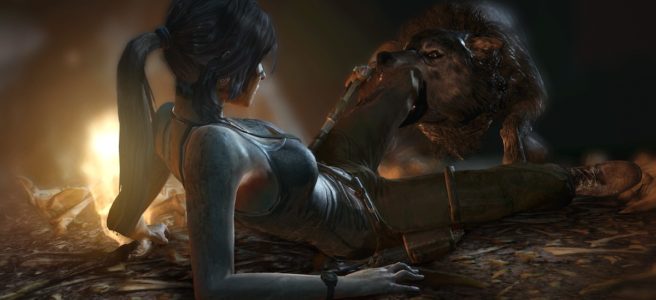




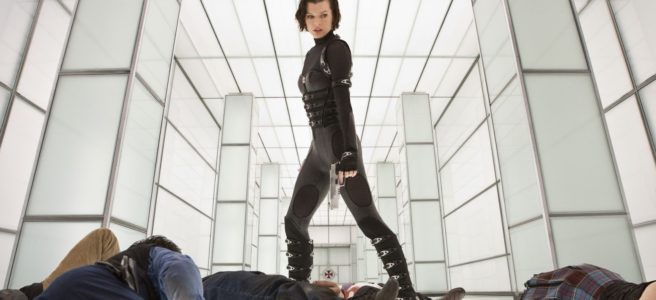














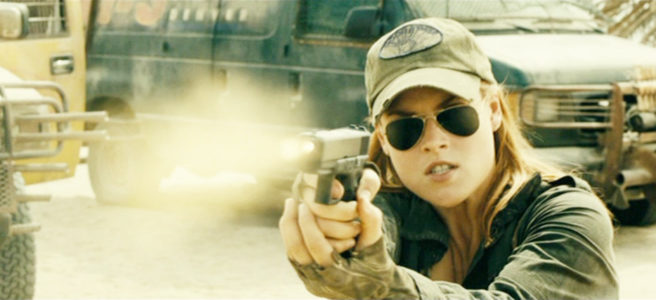







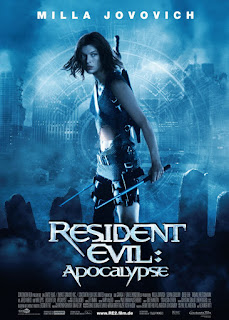

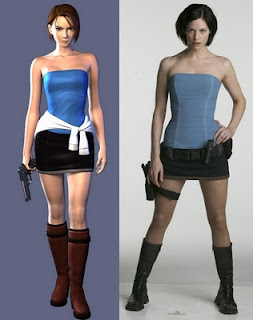

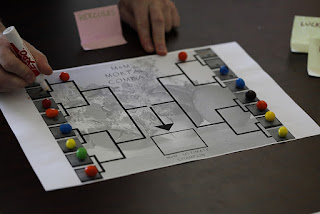

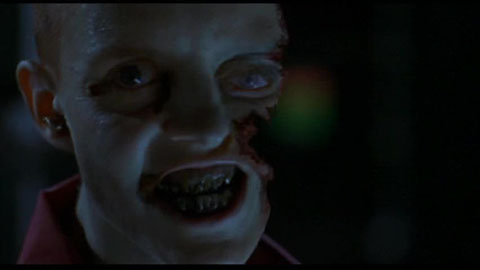






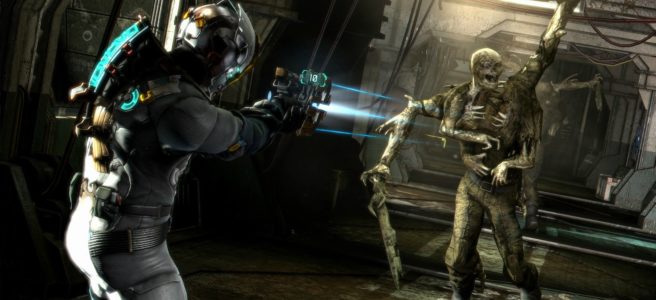

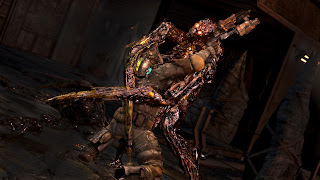




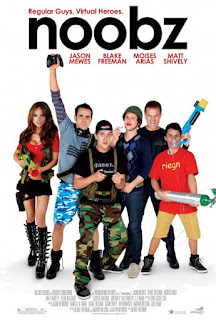.jpg)



